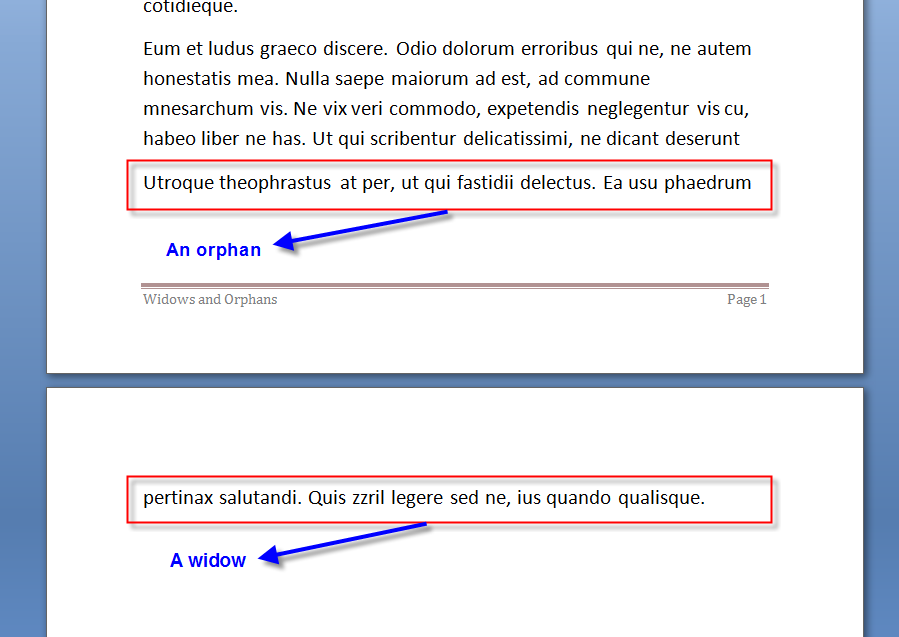

Make sure that fixing an orphan or widow doesn’t cause a dozen more spacing issues later on. Like any form of editing, making changes in spacing to a body of work can affect spacing later in the piece. For example, some versions of Microsoft Word have an option to automatically prevent widows and orphans under the Paragraph Format tab. On the Format menu, click Paragraph, and then click the Line and Page Breaks tab. If orphans and widows are a reoccurring problem for you, see what options your word processor offers. Select the paragraphs in which you want to control widow and orphan. They can be solved simply by adding a line of space before, to force them onto the next page. Magazine articles use this method with the most success. What is widow and orphan control in Word Widow/Orphan control prevents a single line of a paragraph from being left alone at the top or bottom of a page. There are lots of reasons why they’re called bad typography: they look untidy they suddenly end a paragraph they leave a lot of white space between paragraphs. If all else fails, you can insert an image or pull quote alongside your paragraph to change the spacing. Widows and orphans are typographical terms for when a word is left on its own line at the start or end of a paragraph. Use this technique with your best judgement an extra line or two of space should be fine, but adding ten lines of space is ridiculous. In longer works, such as books, you might want to add space until the problem paragraph is entirely on the next page. If your text is only a few pages, you can experiment with adjusting page margins.
#Widows and orphans in word 2010 update#
In a shorter piece, you can try to adjust the spacing between paragraphs, letters, or lines of text. Update from Joy Casey in Ethiopia (written March 22nd). Sometimes, however, that isn’t an option. The quickest solution is to remove a few unnecessary words, or rewrite a sentence or two. The goal is to reduce the space your paragraph fills by just enough to accommodate the widow line. If you have one line of a paragraph on a page by itself. Luckily, there’s a few techniques to prevent widows and orphans from happening. By default, Word prevents the last line of a paragraph from appearing at the top or bottom of a page. Orphans are the opposite if there’s only room on a page for one more line, the first line of a paragraph can be “orphaned”, while the rest of the paragraph goes to the next page.īoth issues are visually unappealing to a reader. If left alone, they show up as a single line at the top of the next page.

Widow/Orphan control Widows and orphans are single lines of text in a paragraph that print at the top or bottom of a text box or column. These options apply only to selected text or paragraphs.
#Widows and orphans in word 2010 manual#
Before you call the police or child protective services, let’s clear up what we’re talking about in typography, widows and orphans refer to lines at the beginning or end of a paragraph that are separated from the body of the paragraph.Īs defined by The Chicago Manual of Style, widows are those pesky lines at the end of paragraphs that get cut off when you run out of space on a page. Use options on the Line and Paragraph Breaks tab to control how lines and paragraphs break between text boxes or columns.


 0 kommentar(er)
0 kommentar(er)
